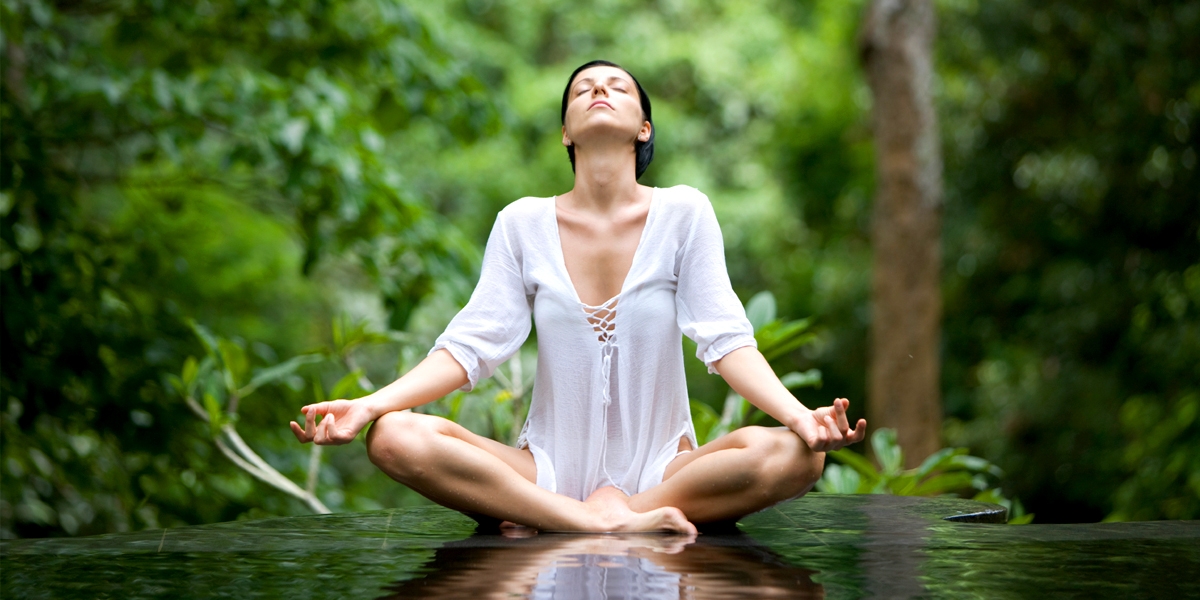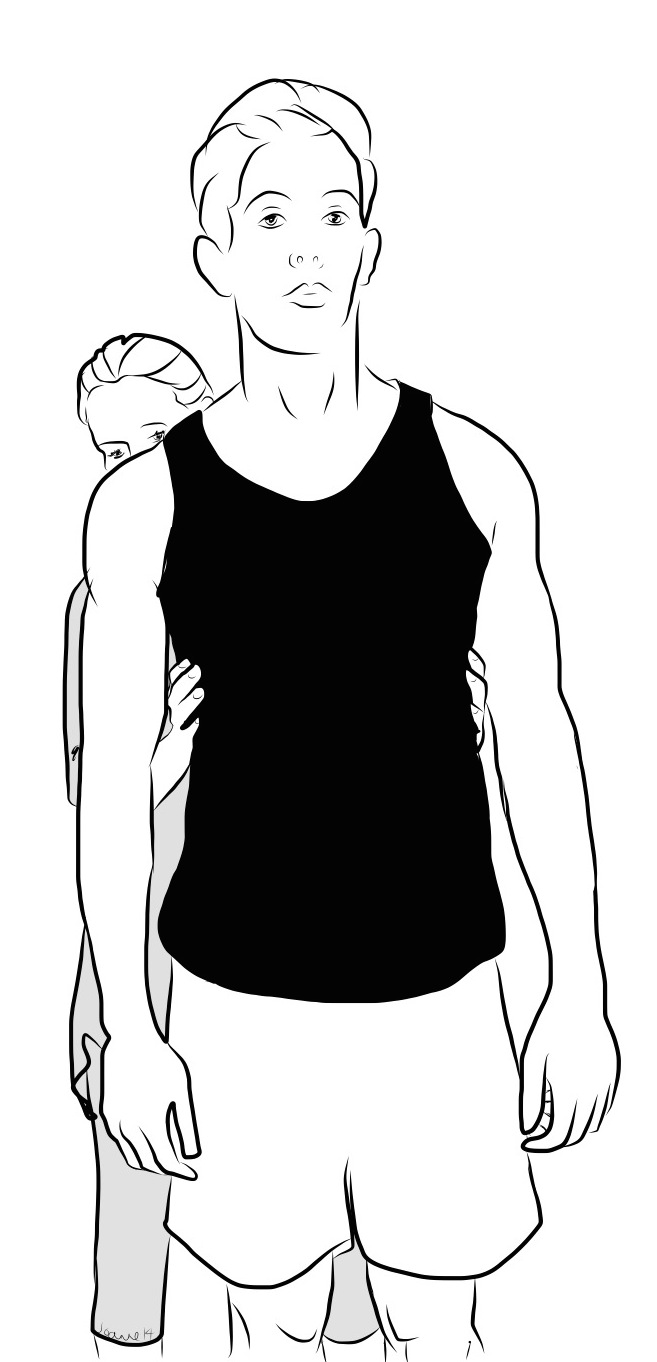Director of the Art of Contemporary Yoga Teacher Training School (AOCY) Joanne Avison exclusively shares with FitPro key positions to help fitness professionals involve their clients in meditative moments.
Meditative moments
There are various ways to introduce a meditative approach to many different aspects of fitness.
Short ‘meditative moments’ before and after training or performance might not be considered full meditation practice as such; however, they are very valuable ways to promote self-awareness and lower stress. It is often the case that, if we are more aware and conscious of what we are doing, we are less likely to strain ourselves or go beyond our natural limits. By being ‘present’ to what we are doing, especially when working in fitness at the speed of movement, we lower the risks of ignoring the more subtle signals of the body that enhance self-regulation.
“A few moments of stillness to prepare and visualise a training programme beforehand can be a valuable contribution to focusing our energy. Whether that is to enhance elite performance or simply prepare, it can prove an invaluable tool to encourage safe practice and possibly even prevent injury. At the other end of a session, a few moments of reflection taken to assimilate the practice and complete any programme can include the benefits of self-acknowledgement and recognition of a goal achieved. As subtle as these gestures of reflection may seem, they build confidence and self-esteem as one of many central themes in adding a meditative approach to training.”
A key portal to this meditative approach before or after any programme is via the breath. We can bring members of a class or session to a sense of the breath and breathing just by inviting them to notice it: stopping to follow the breath and ensure that the breathing rate is natural and easy after a session. This can be enhanced with three simple touch cues, especially if working on a one-to-one basis. If it is first done in standing, it encourages a more dynamic stillness, rather than a resting state. Once practised, this can help to tune the awareness to the breathing rate. Becoming conscious of the breath and its natural rhythms and variations can then be taken into a more traditional seated posture, always encouraging a naturally curved and upright, although relaxed, spine where possible. It is an introduction to meditation, in which the practice of ‘breath observation’ (Vipasana) is a popular starting point for learning the full art and science of meditation as a practice in its own right.
Breathing exercise
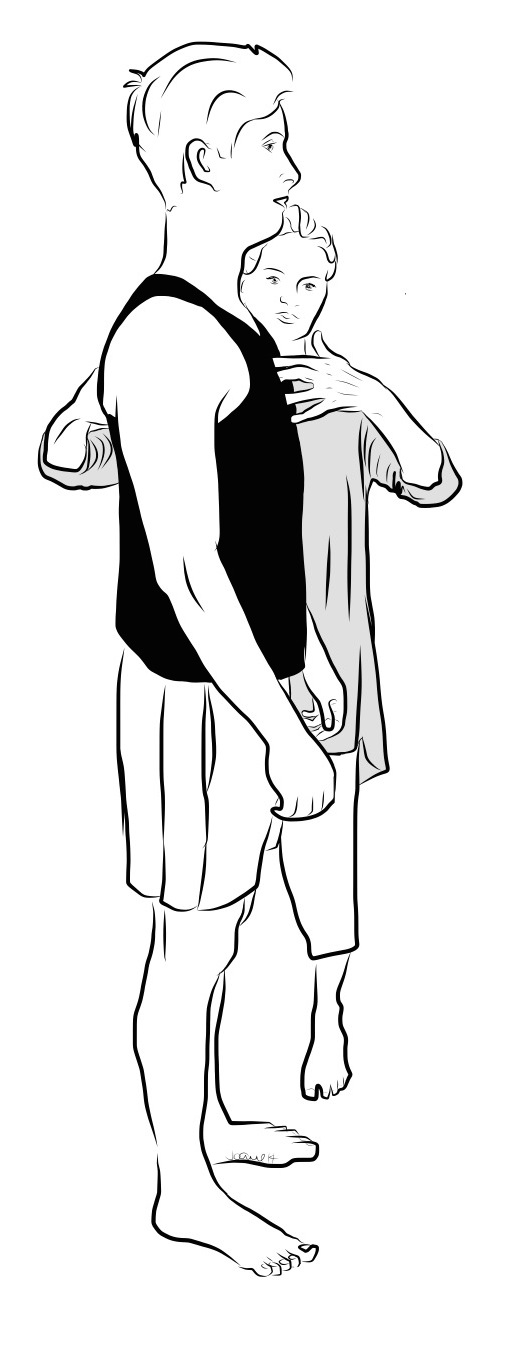 Position 1
Position 1
The practitioner places their fingertips at the breastbone (sternum) and spine, between the shoulder blades (upper thorax) to encourage the anterior/posterior movement of the breath between their fingertips (just below the collar bones at the front in women). The participant simply focuses gently on moving the breath between these touch cues.
Position 2
The practitioner places flat hands either side, around the low back ribs. This allows the participant to inhale into the lower back area and sides of the lungs and gently allow a fuller breath, without flaring the front ribs.
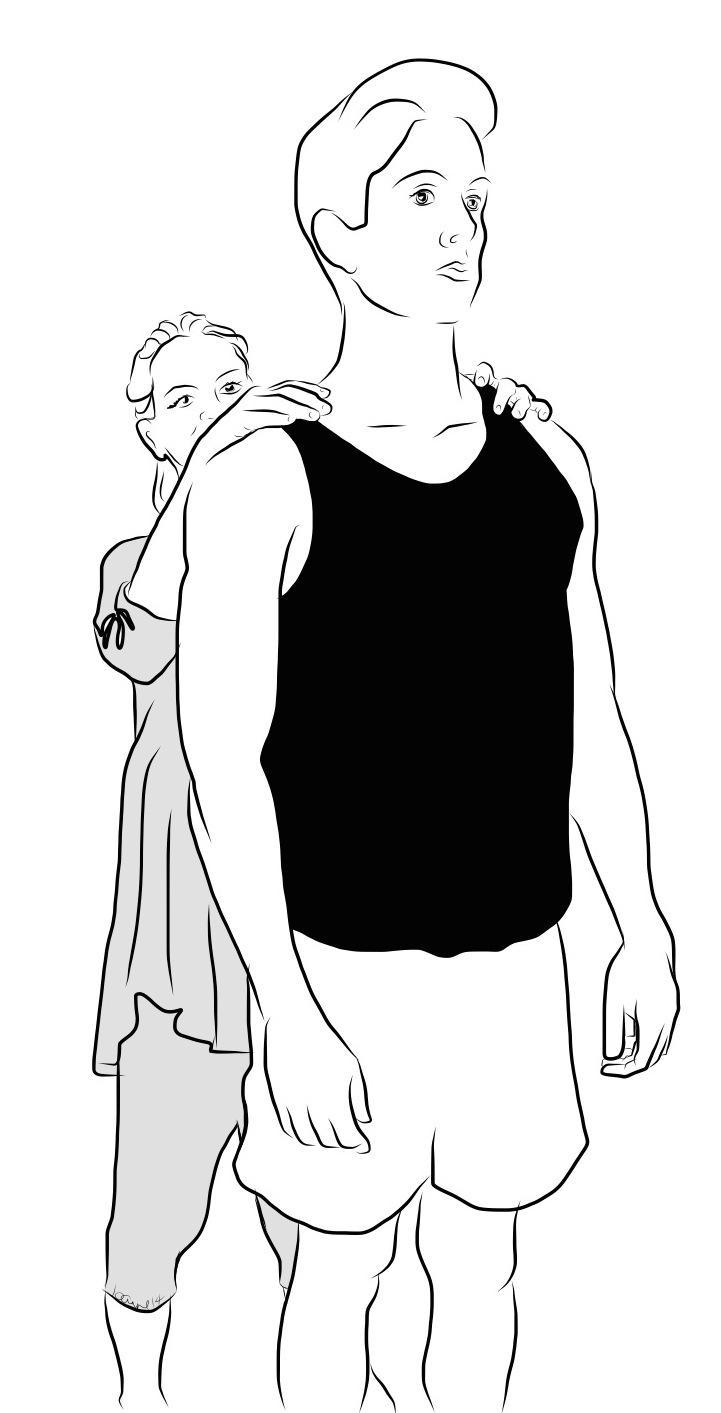
Position 3
The practitioner places flat hands on either shoulder, encouraging the breath in the upper layers of the lungs. The thumbs rest on the upper shoulder blades (scapulae) to foster a gentle glide over the rib basket as the participant breathes.
This short series of breath movements allows the participant to become more aware of where they are breathing and also teaches the more subtle ability to move attention to different areas of the body and prepare for this valuable aspect of meditation.
They are then encouraged to sit comfortably still (back against the wall or on a cushion – or in a chair if there is any injury or extraneous stiffness) and simply follow the breath. They become aware of the inhalation (pausing at the top of the inhale) and exhalation (pausing after it is activated and before the next breath in).
Introduction to meditation practice
The tongue rests on the roof of the mouth and the jaw relaxes. Invite a soft focus behind the eyes and draw the breath in through the tip of the nose and up to the crown (inhale). Pause briefly at the top of the inhalation, then allow the breath to drop gently downwards, between the sitting bones. Let the breath go and soften into the pause at the end of the out-breath without slumping. (Imagine the breath releasing into the ground and letting it go softly into the earth beneath you. Then begin again for the next inhalation from the tip of the nose.)
This pause (at the top of the inhalation and end of the exhalation) is brief and easy; it should not be forced. However, it is an essential component of resting the mind and the body. When the body is ready, it naturally draws the next breath in and the cycle is repeated. (Note to practitioners: Discourage the movement of the eyes behind the closed lids following the breath up and down, as this can cause a headache; encourage the eyes to keep still.) After 5-10 minutes of following the breath (for however long it is comfortable and easy to sit), allow a few breaths with the eyes open to come back into the room and restore alertness, before ending the practice.
Ideally, this introductory practice is a few minutes of awareness to simply be present to breathing as a way of opening and/or closing a training session. This small practice can accumulate and bring a participant to more clarity and an appreciation of the benefits of a meditation practice for its own sake. This can be fun and beneficial and used before and after any challenging situation or daily task to help to ground and centre the sense of purpose or completion.
Check out our yoga teacher insurance cover
Bio
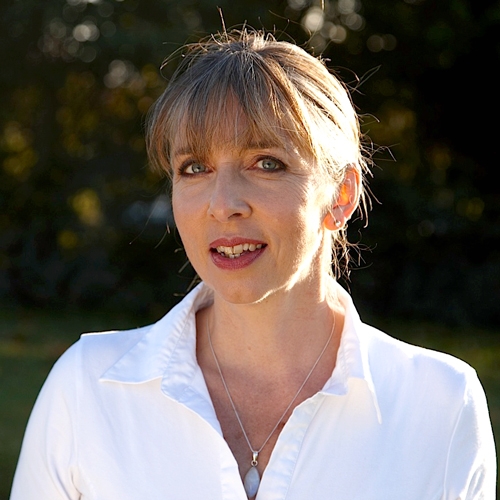
Joanne Avison is co-founder and director of the Art of Contemporary Yoga Teacher Training School (AOCY), accredited worldwide by Yoga Alliance (USA), Yoga Federation of India, European Yoga Alliance and IPTI (Independent Professional Therapists International). She holds E-RYT500 status (‘E’ denotes Experience) with many thousands of registered teaching hours over the last two decades having been accumulated all over the world since she graduated in 1995.
Joanne currently teaches regular workshops and webinars around the world on structural anatomy, biotensegrity and fascial fitness. Visit: fasciasymposium.co.uk and bodyworkcpd.co.uk for recent presentations.)
Note: The above illustrations are by the writer of this blog, Joanne Avison.
Want to find out more?
Mindfulness has become a buzzword in the fitness industry. To discover whether meditation has reinvented spirituality, download the FitPro app. Step inside the Autumn issue of Fitpro magazine and read Olivia Hubbard’s interviews with yoga professionals who centre their classes on helping their clients find inner peace.
Find out how skier Callum Smith overcame his own personal challenges at the Sochi Olympics


